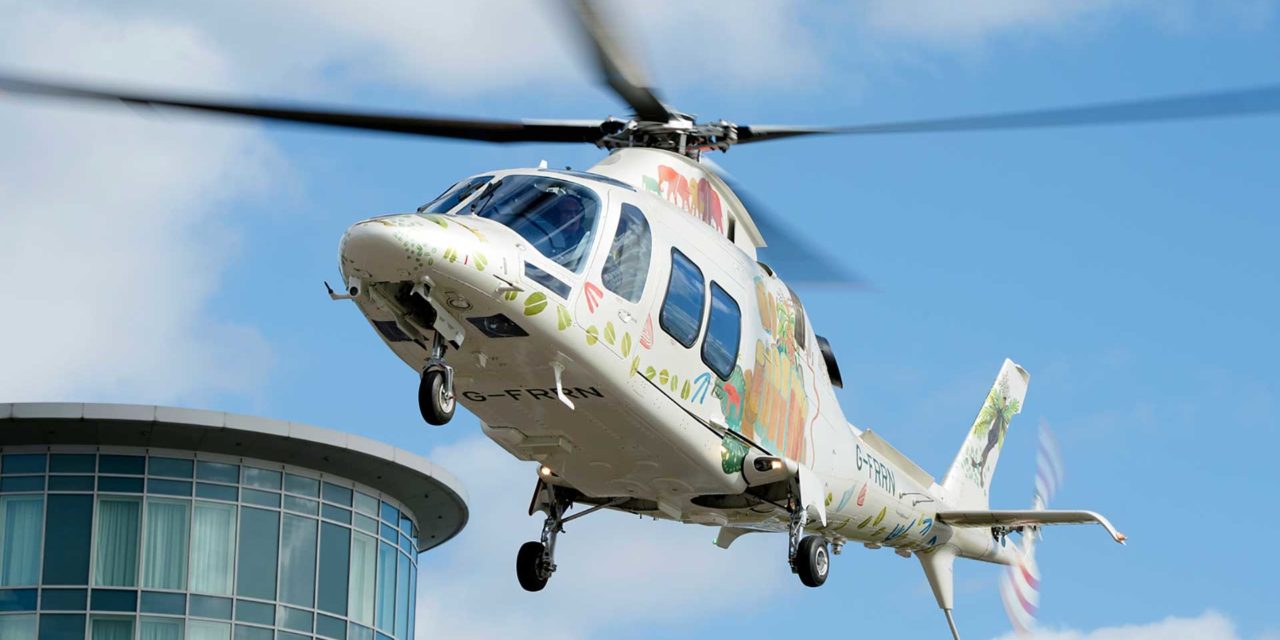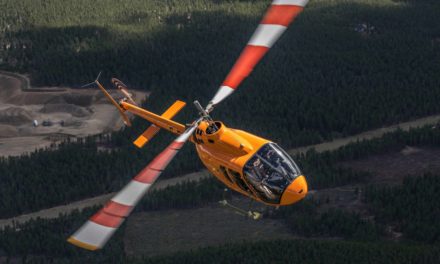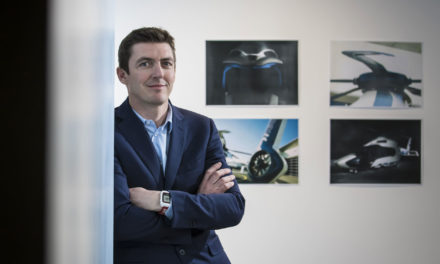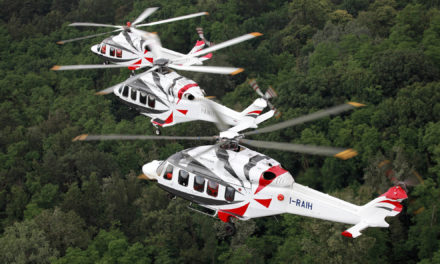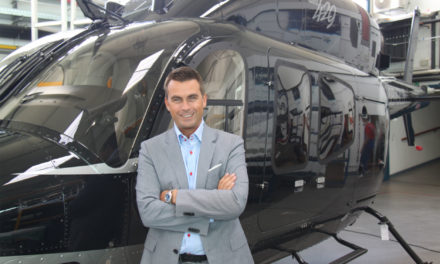In early December 2018, Patrick Ky was invited to Paris by the French Professional Aeronautics and Space Journalists Association (PASJA),. the Director of EASA He outlined the main changes attributable to the Agency’s new basic regulation. He also and announced the creation of a working group to make proposals to improve safety in the operation of light helicopters operations.
Helicopter Industry: The EASA has a new basic regulation, which came into force on September 11, 2018. What significant changes for air operators stem from this regulatory change?
Patrick Ky: The Agency was created in 2004. Initially, it was to certify European products, especially Airbus – previously, each product from the European industry had to be certified by each authority from the European countries; so it was not very effective. Secondly, the legislator extended the Agency’s field of competence to operational aspects. The role of EASA has gradually evolved to deal with pilot licensing and maintenance. Finally, airport and air traffic control have been integrated into our scope. Let us remember that in 2004, certain equipment and / or certain practices did not exist – there was not yet a question of drones, nor cyber security. In addition, the relations between the EU states and the European Union itself were different from today. This is why the basic regulation, which defines the role of EASA, has been reviewed and modernized. It also aims to strengthen the influence of the Agency beyond the European borders.
Four major changes need to be highlighted. The first is related to new technologies. In the new regulation, EASA becomes legitimate and competent with regard to drones. Previously, it did not regulate for any aircraft with a mass of less than 150 kg. From now on, the drones, even the smallest ones (except those which are only devoted to leisure activities), are under its regulatory responsibility. The second theme related to technology refers to cyber security. We now have a very clear mandate on this subject, which was not obvious until recently, because the actors concerned were still in a phase of denial. There were, and still are, a number of concerns in this area.
The second change relates to the relationship between EU states and the EU itself in monitoring the safety of air transport. I have had the opportunity to express my concern about what I would call flags of convenience in air travel, because in Europe we have had civil aviation administrations which were deficient. In order to bring them up to date update them, we only had a cumbersome bureaucratic mechanism, as we had to go through different audit phases and then launch an infringement procedure by the European Commission. All this could take four to five years to produce an effect for the benefit of aviation safety. However, with the virtues of the single market in Europe, any airline can set up anywhere in the EU to serve any market. For example, a carrier who sets up in Latvia can serve the French market. So if the level of surveillance in Latvia is not equivalent to the one we know in France, we take risks in terms of safety for the passengers of this carrier. In the new regulation, even if it did not go as far as I had hoped, when a country faces glaring difficulties in exercising its responsibilities as supervisory authority, whether it be air operators established on its soil or airports, or even air traffic control. At the end of a slightly complex process, the EASA can take control and carry out this monitoring itself. This represents a fundamental change in relations between Europe and the states that make it up. Since taking office five years ago, the well-resourced and efficient state civil aviation authorities have remained so. But the deficient authorities have also remained, while between these extremes lies the “soft belly” of aviation security within the EU. So my goal is to help the less well-resourced countries, because I think that’s where the biggest risk lies – it does not mean we’re going to stop auditing the most successful authorities too.
Third point of significant development through the new basic regulation: any organization conducting air operations in more than one state now has the possibility to declare itself as European, and therefore to choose EASA as the supervisory authority. At this very moment, we are conducting discussions with operators who are interested in this openness. This should eventually lead to a progressive increase in the competence of air operators at European level. To achieve this, EASA does not intend to grow – it has about 900 people today – but rather to rely on a few civil aviation administrations that have a sufficient workforce and acting on behalf of the Agency for the benefit of other EU state civil aviation administrations. And in this new context, the Air Operator Certificates (AOCs) issued will be European, regardless of the issue of traffic rights, which refers to another regulation.
Finally, the last part refers to the fact that today, European state aviation stakeholders work outside the EASA’s regulatory coverage: customs, police, fire fighters, and even military, for the most part. With the new regulation, we can, on the basis of their voluntary service, welcome these stakeholders within our perimeter. One example: today, helicopters operated by police forces are subject to specific national regulations. We have discussed this with the association of the European police air forces and with some governments: it makes no sense for them to work under specific regulations, because from an aircraft point of view, their helicopters are civilian aircraft. From a pilot point of view, their crew being selected on national criteria, they cannot exchange their pilots between two police forces, or between two neighboring countries, for example. This is because there is no interoperability, which poses bridging problems between the civil world and the police world. That is why police forces told us that they wanted the enforcement regulations for their air operations to be entirely civilian. They would benefit in terms of purchases and maintenance of aircraft, but also access to training for pilots, etc. Another example: in some countries, customs control is carried out by either public (including military) or private operators. And here too, some states would like these private operators to follow purely civil regulations. There is no reason for border control, for example, to be managed by specific regulations. As for the military field, it would not make no sense to see a fighter plane’s mission managed by a civil regulation. On the other hand, planes and transport helicopters could very much conform to this. This is why we are discussing this with the concerned authorities to consider a partnership in the field of certification and flight operations. This opens up a wide range of possibilities, including export for our European manufacturers: there are more and more calls for tender launched in the military field around the world, for which the customer requests an AESA or FAA (Federal Aviation Administration) certification. This will now be possible.
Helicopter Industry: Outside of its European scope, does EASA aim to operated more widely internationally?
Patrick Ky: When the agency was created, we basically had a certification authority around the world: the US Federal Aviation Administration (FAA). There was sometimes a battle over standards and norms, which was dominated by the Americans because in their view, the French, British or Germans were not necessarily well coordinated. Today, in the world, we have two references: the FAA and the EASA. And I think it can be said that the European Aviation Safety Agency’s influence is growing globally, especially since Donald Trump came to power in the United States. A good number of countries have decided to change their regulations or have to choose an aircraft certification standard between the two options. In most cases, they opt for the European model. One example is Iran, which has just adopted air regulations that are a true copy of the EASA regulations. The Iranian authorities did not ask us anything, and we did not give them anything. But they still made that choice. Why? It seems that the United States, at the present time, makes people a little afraid, or arouses some distrust. This may also be due to the total independence of the EASA from a political point of view. It is worth noting that the FAA’s mission, in their press communications, is “to ensure global leadership in aviation for America”. With the Trump administration, it is true that clear guidelines are given to protect the American industry. We, and this is normal, have never had a mandate to implicitly protect European industry. EASA rightly enjoys a more neutral, independent image. No policy, no more than the European Commission, can force someone to make a decision. I would add that as far as the Agency’s outreach capabilities are concerned, I think there is an interest for the European industry: the more the EU authorities use the European regulations, the easier it is for this industry to act and to deploy internationally.
Helicopter Industry: EASA recently convened a group of experts to review safety in helicopters operations in Europe. Why this initiative?
Patrick Ky: Because helicopter safety does not seem to meet public expectations. I do not mean big aircraft large helicopters, such as those used in the oil and gas market field of energy (off-shore, etc.), but those used operated in other sectors. When we see that 15% of accidents occur during the pilots training of pilots, we say that there is a problem somewhere. So I created a group of experts – rather operational – who looked into the matter to study this problem. I asked them to make recommendations, not so much on the design of the helicopter as on training and safety culture in the companies that operate this type of aircraft. About 80% of farmers have only one or two machines. And often, they are operators who do not have a very strong safety culture. Helicopters are generally used in very specific environments, such as aerial work, mountain rescue, emergency evacuation, etc.
Operators work more with the notion of mission – and mission success in a particular operational context – than with the concept of transport safety. We have identified a number of actions to increase the culture of aviation safety among these operators. The task is complex because there are many small structures. But we must succeed in making them all aware. Among other things, I would like to develop the use of the simulator to ensure that conventional exercises, such as hydraulic failure, which generates a fairly high number of accidents, are worked on more and better. In my opinion, there should be more time given for the simulator for this type of thing. But since the market is smaller than that of commercial air transport, it seems that simulators are less efficient. But we can help change that. This is a sensitive topic for EASA.

